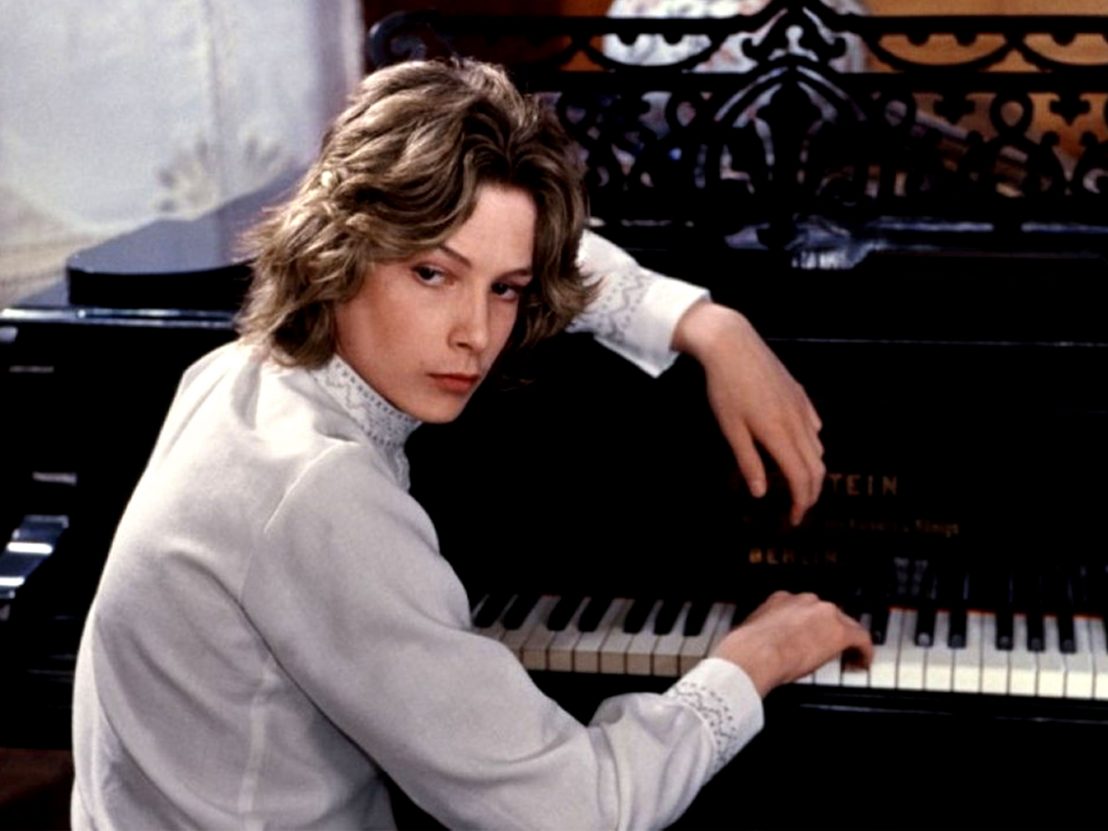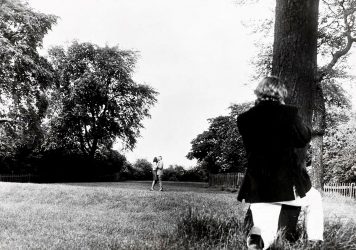
It was in London on 1 March, 1971, at the world premiere of Death in Venice, when Luchino Visconti first branded 16-year-old Björn Andrésen “the most beautiful boy in the world”. Inebriated by the attention, the boisterous director paraded the young Swedish boy among royals and celebrities as if the coy creature standing by his side was a scientific discovery.
Based on the Thomas Mann novella of the same name, Death in Venice follows Gustav Aschenbach (Dirk Bogarde), a composer on the brink of exhaustion, as he travels to the eponymous Italian city in the hope that the ocean breeze will remedy him. The first time the artist spots Tadzio (Björn Andrésen), the boy is at a dining hall in the company of his family, his symmetrical face framed by stained glass windows as if to compare it to that of an angel – a beauty almost sacred. Gustav is immediately besotted, proceeding to spend his days lurking after the boy, his obsession growing to the point of fever.
Written by Mann as the ultimate embodiment of beauty, Tadzio drove Visconti to a rigorous casting process. The Italian director toured Scandinavia in search of perfection, the region being renowned for its blonde, pale-skinned, blue-eyed aesthetic. One after the other, boys turned and posed for the director, whose underwhelmed countenance only changed when he spotted Andrésen. The exhaustive casting process led to a short documentary titled Looking for Tadzio, which would later inspire The Most Beautiful Boy in the World, a new documentary on the life of Andrésen.
We see this lanky lad approach Visconti, his gate that of an adolescent who still hasn’t figured out the proportions of his growing bones. As per the director’s instructions, he twirls and strips in front of the camera, his body contorting to externalise the discomfort he can’t quite communicate. The voyeuristic nature of the archive footage triggers immediate unease; the image of the boy photographed from all angles wearing nothing but underwear is deeply disturbing.
“Why call him Björn Andrésen still? He’s Tadzio now. Only Tadzio, a real gorgeous creature, as well as an abstract idea, a product of the mind,” states a faceless narrator as Andrésen begins to morph into the figure that would forever tarnish his sense of self. In Death in Venice, Tadzio is merely a vessel, a walking Greek sculpture conceived solely to reflect Gustav’s deepest fears and desires. To Visconti, Andrésen stands for a similar notion, the young man America to his Columbus, a shining blue diamond that reflects his own perceived greatness.
Ironically, the man who built the myth was also the one to destroy the man. When Death in Venice screened at the Cannes Film Festival, Visconti joked with reporters about Andrésen being prettier at the time of casting. “He’s 16, he’s too old now.” Time had already been taken from the teenager, and it was now acting as his executor, the ever-ticking clock eating away at his worth. Beauty, it seems, is only pure when found in the very young, a notion echoed by a dying Gustav who mutters under his breath, “In all the world, there is no impurity as impure as old age”.
In The Most Beautiful Boy in the World, the Cannes footage is interwoven with scenes of an anxious Andrésen, now in his sixties, getting ready for his eviction appeal. It’s a poignant narrative choice, considering how the French riviera provided the setting for the start of the actor’s demise, a consequence of years of abuse at the hands of vultures who saw him as nothing but a title that had once been bestowed upon him. The older Andrésen appears frail, his long white beard and hair neatly tucked to give the appearance of someone who was put together, not the vanquished man who saw his apartment – and his life – be consumed by chaos.
There is a moment in the documentary where a Japanese manga artist, who based one of her most famous characters on Andrésen, takes a deep breath before pondering, “I always wonder if our perception of him actually hurt him.” Ultimately, everyone wanted a piece of the most beautiful boy in the world. The most beautiful boy in the world just wanted to be a boy.
Published 1 Mar 2021

By Adam Scovell
Maryon Park in Charlton lies at the beguiling centre of the Italian director’s psychological mystery.

By Adam Scovell
The decade following the Nouvelle Vague saw the emergence of progressive filmmakers like Chantal Akerman and Maurice Pialat.

The events of May ’68 had a profound impact on the film world.